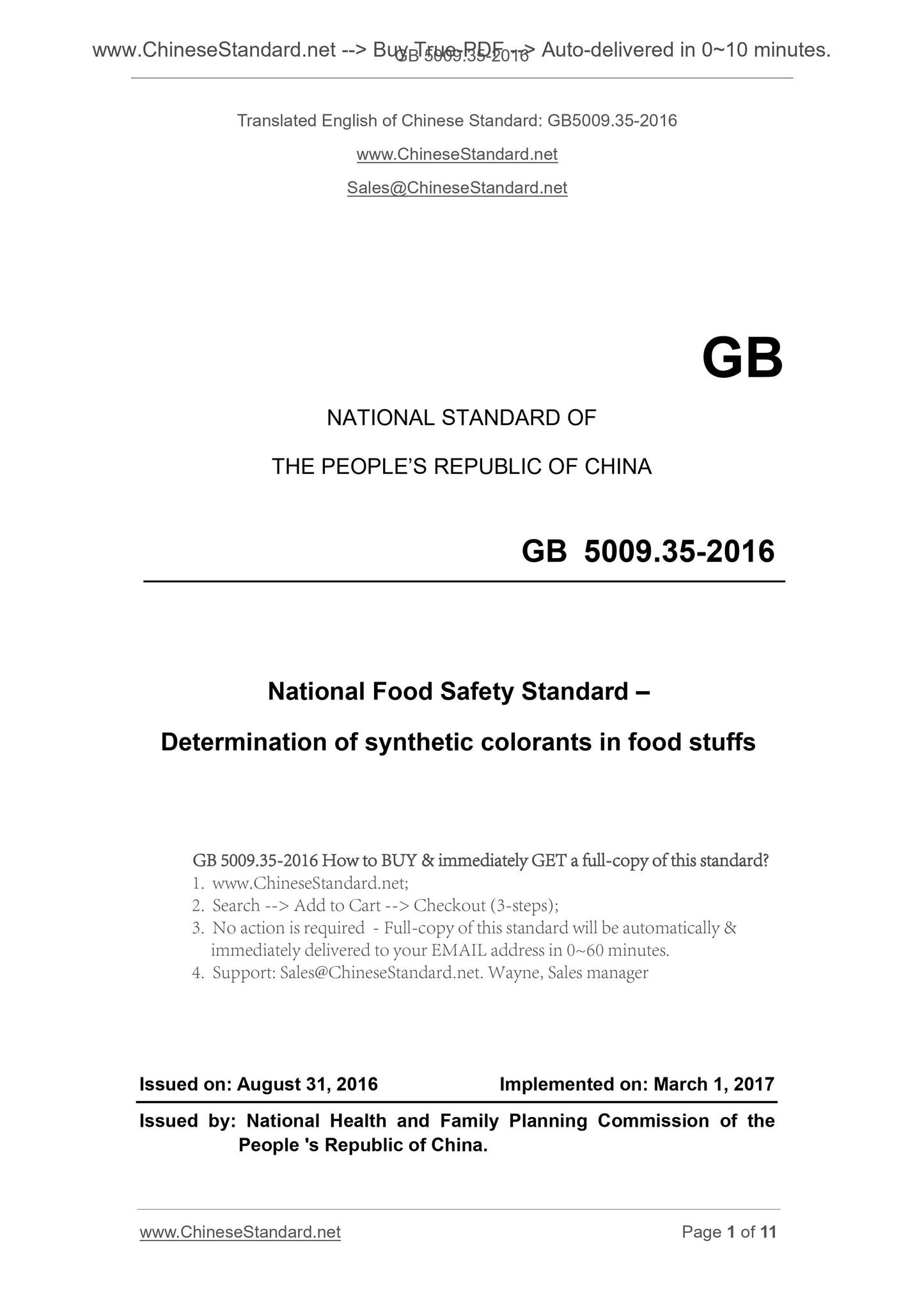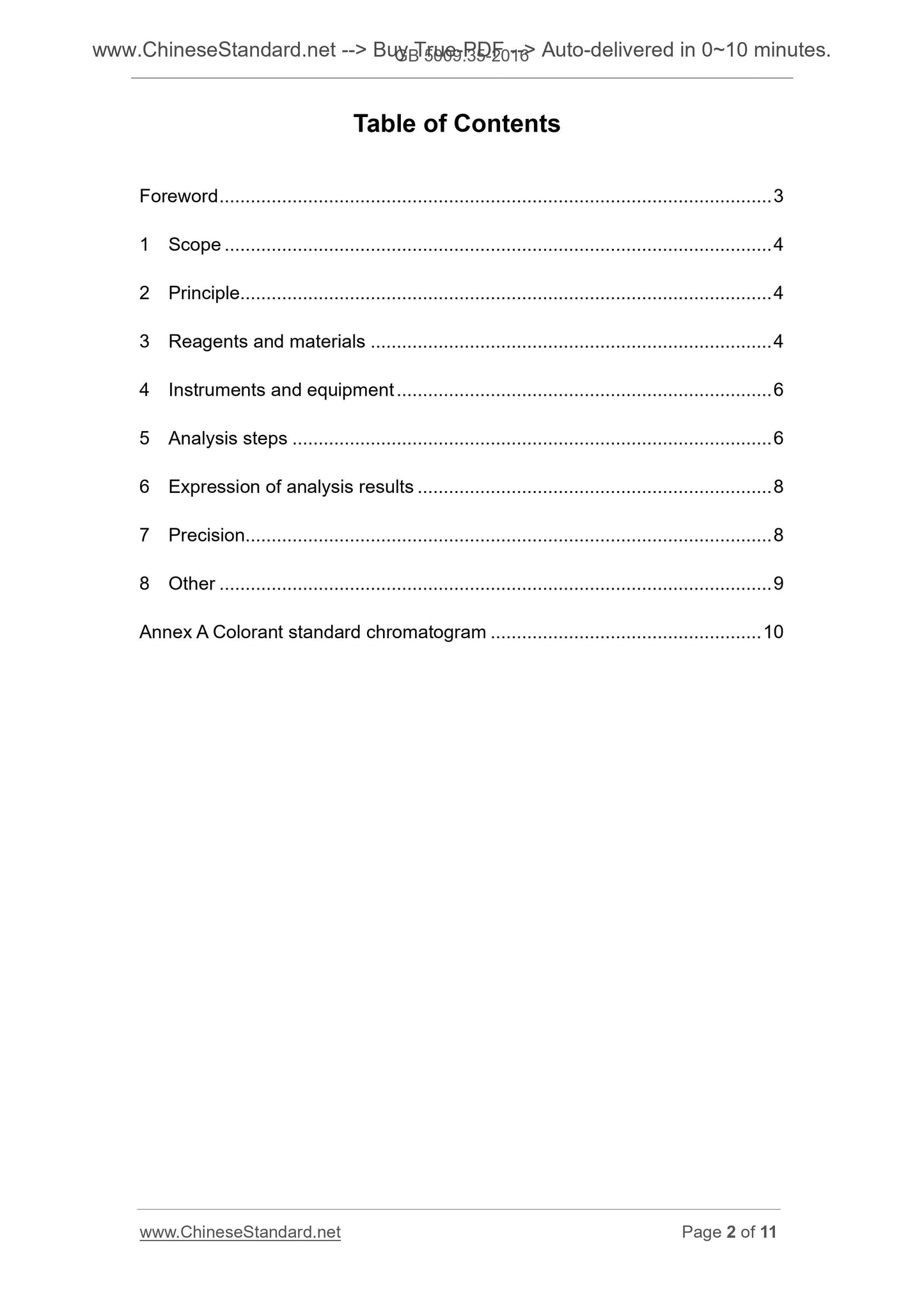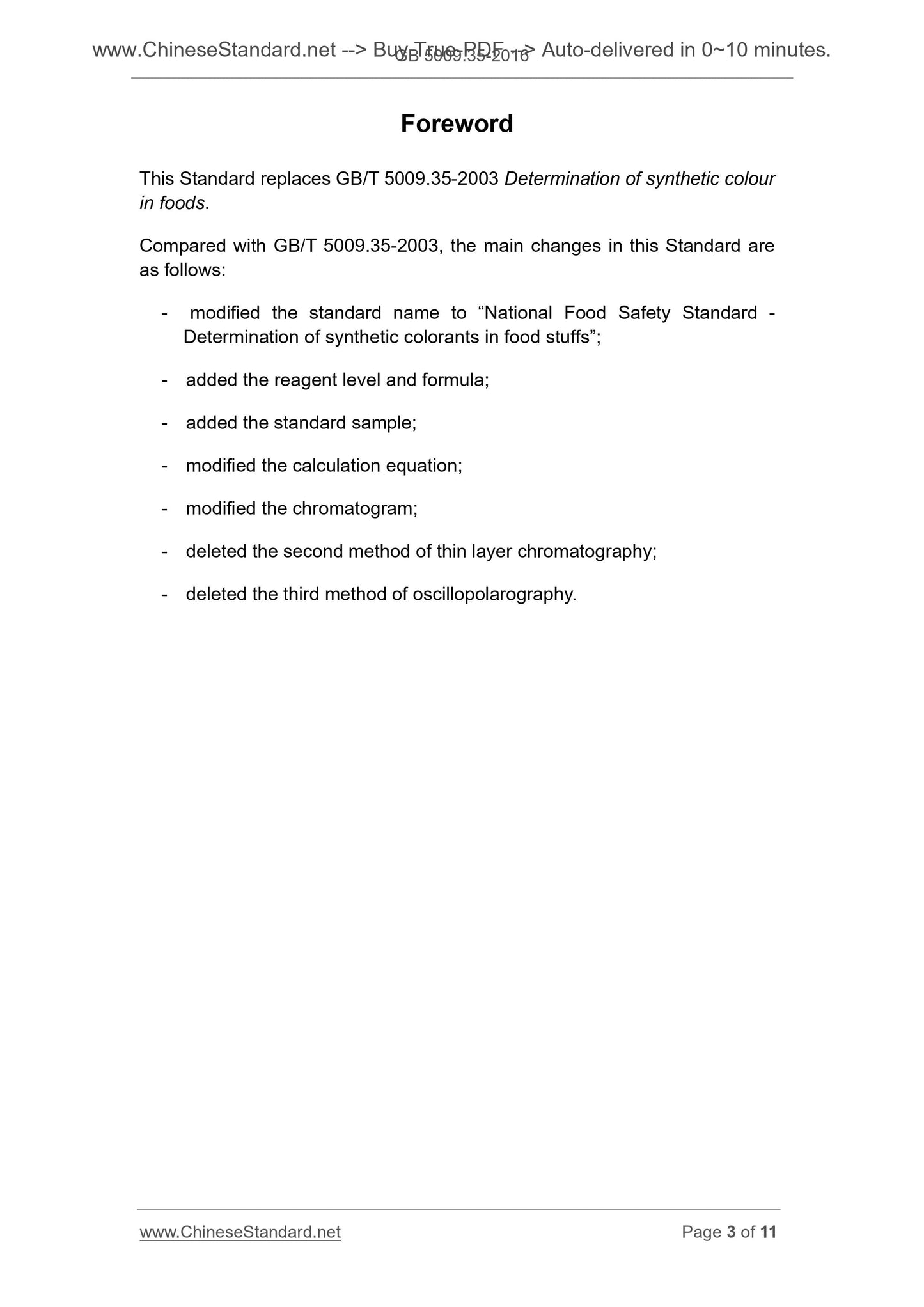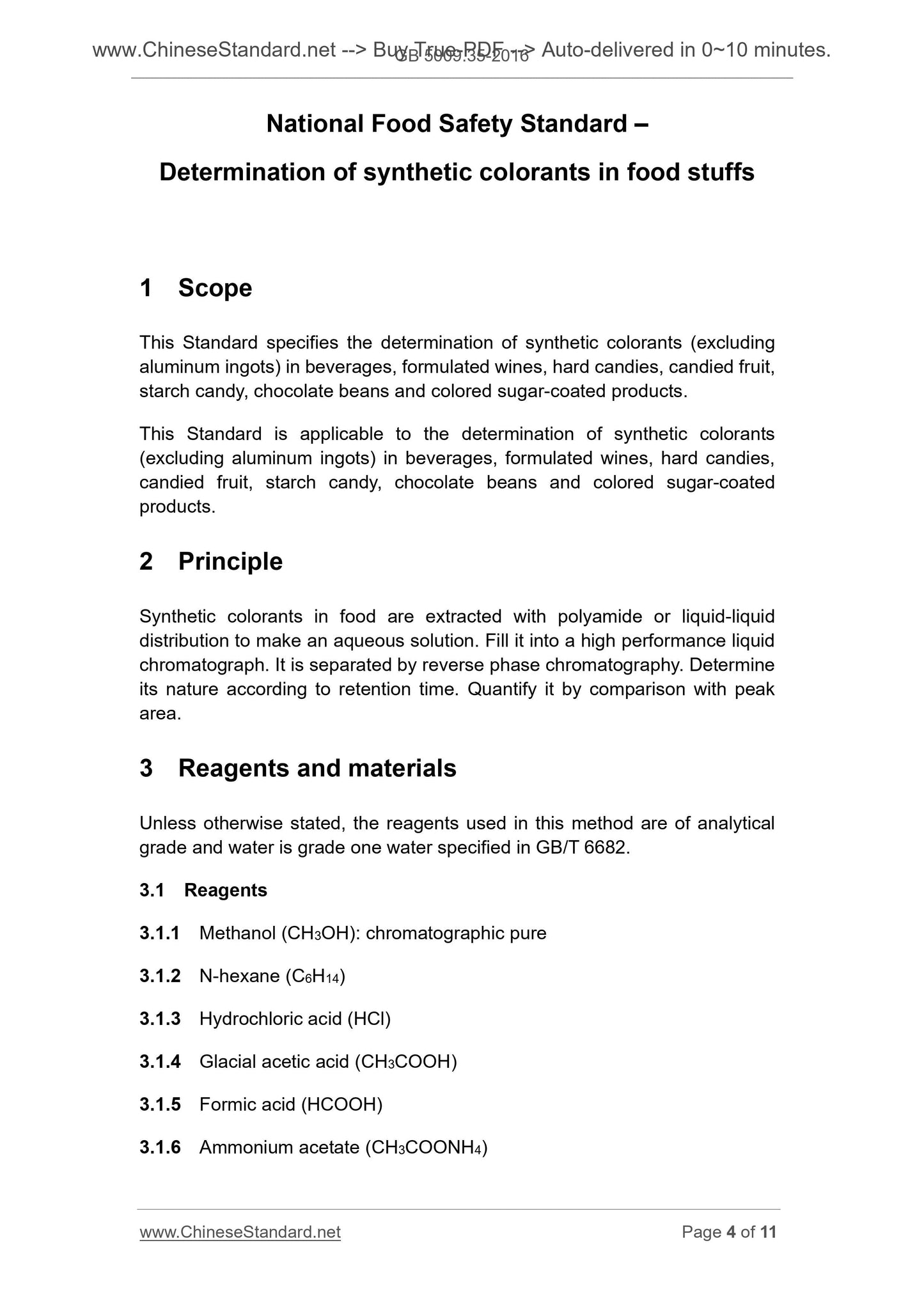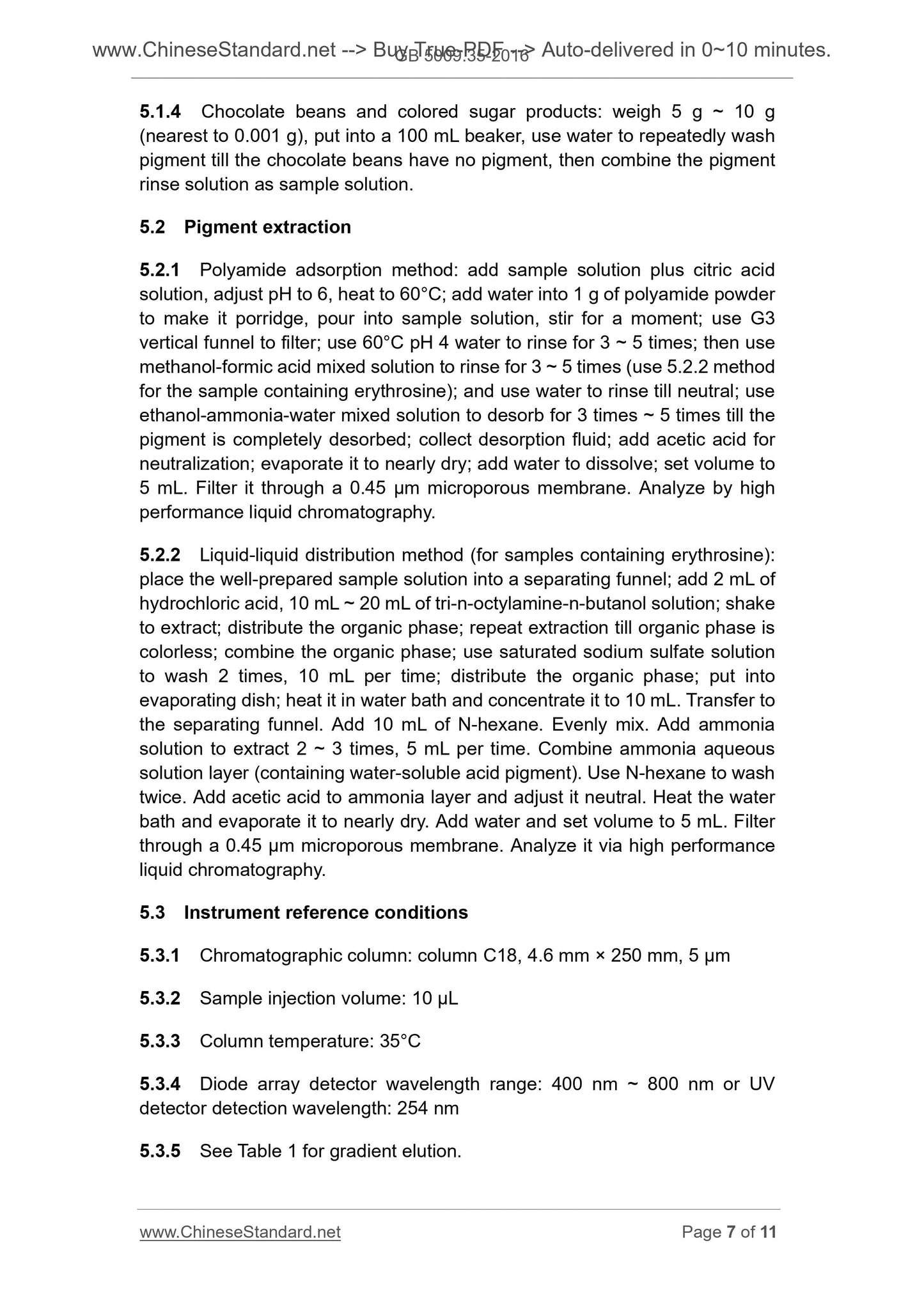1
/
of
5
PayPal, credit cards. Download editable-PDF & invoice in 1 second!
GB 5009.35-2016 English PDF
GB 5009.35-2016 English PDF
Regular price
$75.00
Regular price
Sale price
$75.00
Unit price
/
per
Shipping calculated at checkout.
Couldn't load pickup availability
GB 5009.35-2016: National Food Safety Standard -- Determination of synthetic colorants in food stuffs
Delivery: 9 seconds. Download (and Email) true-PDF + Invoice.Get Quotation: Click GB 5009.35-2016 (Self-service in 1-minute)
Newer / historical versions: GB 5009.35-2016
Preview True-PDF
Scope
This Standard specifies the determination of synthetic colorants (excludingaluminum ingots) in beverages, formulated wines, hard candies, candied fruit,
starch candy, chocolate beans and colored sugar-coated products.
This Standard is applicable to the determination of synthetic colorants
(excluding aluminum ingots) in beverages, formulated wines, hard candies,
candied fruit, starch candy, chocolate beans and colored sugar-coated
products.
Basic Data
| Standard ID | GB 5009.35-2016 (GB5009.35-2016) |
| Description (Translated English) | National Food Safety Standard -- Determination of synthetic colorants in food stuffs |
| Sector / Industry | National Standard |
| Classification of Chinese Standard | C53 |
| Word Count Estimation | 8,851 |
| Date of Issue | 2016-08-31 |
| Date of Implementation | 2017-03-01 |
| Older Standard (superseded by this standard) | GB/T 5009.35-2003 |
| Regulation (derived from) | Announcement of the State Administration of Public Health and Family Planning 2016 No.11 |
| Issuing agency(ies) | National Health and Family Planning Commission of the People's Republic of China, State Food and Drug Administration |
Share
